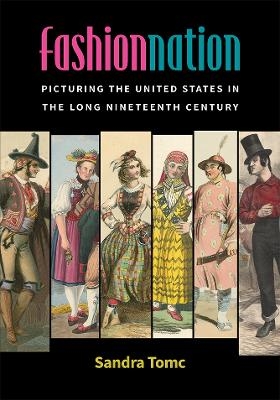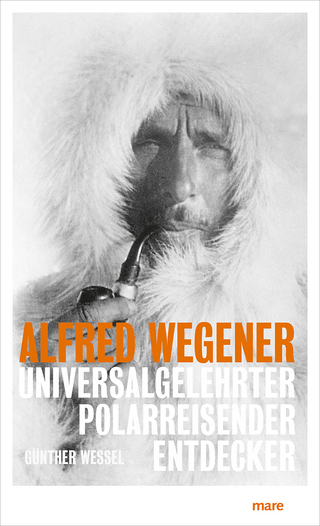
Fashion Nation
Picturing the United States in the Long Nineteenth Century
Seiten
2024
The University of Michigan Press (Verlag)
978-0-472-07489-1 (ISBN)
The University of Michigan Press (Verlag)
978-0-472-07489-1 (ISBN)
In the late nineteenth century, the United States was known internationally as a place full of gaudiness and glitter. This book argues that this reputation was rooted in early nineteenth-century British and European ethnic nationalism, and the fashion of wearing colourful ethnic costuming that was adopted as part of these movements.
In the late nineteenth century, the United States was known internationally as a place full of gaudiness and glitter. While scholars have long assumed that this visual excess was literal, linked to the United States-utilization of sophisticated modern light and consumer technologies, Fashion Nation argues that far from being linked to technology or consumerism, the reputation of the United States as a place of glittery bodies and landscapes was rooted in early nineteenth-century British and European ethnic nationalism, and the fashion of wearing colorful ethnic costuming that was adopted as part of these movements.
In this work, Sandra Tomc traces the history of the idea of America as a gauche, flashy place from its early proliferation in the 1820s and 1830s, when American flashiness was associated primarily with colorful clothes, to its fruition in late nineteenth-century mass entertainment when the notion of American visual audacity shifted from clothes to elaborate lights and technological displays. Tomc argues that in the wake of pressure in the first half of the nineteenth century to embrace racially and ethnically saturated national types, significant branches of U.S. nationalist culture developed national types distinguished by their refusal to divulge racial and ethnic affiliation. To make its case, Fashion Nation reads literature alongside an extraordinary, colorful, and largely forgotten archive of international costume books, theatrical spectacles, travelogues, and world's fair extravaganzas to show how America was textually and visually constructed for transatlantic audiences.
In the late nineteenth century, the United States was known internationally as a place full of gaudiness and glitter. While scholars have long assumed that this visual excess was literal, linked to the United States-utilization of sophisticated modern light and consumer technologies, Fashion Nation argues that far from being linked to technology or consumerism, the reputation of the United States as a place of glittery bodies and landscapes was rooted in early nineteenth-century British and European ethnic nationalism, and the fashion of wearing colorful ethnic costuming that was adopted as part of these movements.
In this work, Sandra Tomc traces the history of the idea of America as a gauche, flashy place from its early proliferation in the 1820s and 1830s, when American flashiness was associated primarily with colorful clothes, to its fruition in late nineteenth-century mass entertainment when the notion of American visual audacity shifted from clothes to elaborate lights and technological displays. Tomc argues that in the wake of pressure in the first half of the nineteenth century to embrace racially and ethnically saturated national types, significant branches of U.S. nationalist culture developed national types distinguished by their refusal to divulge racial and ethnic affiliation. To make its case, Fashion Nation reads literature alongside an extraordinary, colorful, and largely forgotten archive of international costume books, theatrical spectacles, travelogues, and world's fair extravaganzas to show how America was textually and visually constructed for transatlantic audiences.
Sandra Tomc is Professor of English Language and Literatures at University of British Columbia, Vancouver.
Acknowledgements
List of Illustrations
Introduction
Chapter One. American Looks
Chapter Two. Restyling an Old World: Metropolitan Fashion in the Antebellum U.S.
Chapter Three. “Clothes Upon Sticks”: The Settler Colonial Sartorial Eye
Chapter Four. Some Inscrutable Flattery of the Atmosphere: The Ethnic Nation in the White City
Conclusion
Index
| Erscheinungsdatum | 01.09.2021 |
|---|---|
| Zusatzinfo | 57 colour illustrations |
| Verlagsort | Ann Arbor |
| Sprache | englisch |
| Maße | 177 x 256 mm |
| Gewicht | 998 g |
| Themenwelt | Kunst / Musik / Theater ► Design / Innenarchitektur / Mode |
| Kunst / Musik / Theater ► Kunstgeschichte / Kunststile | |
| Geisteswissenschaften ► Geschichte ► Regional- / Ländergeschichte | |
| Geisteswissenschaften ► Sprach- / Literaturwissenschaft ► Anglistik / Amerikanistik | |
| Geisteswissenschaften ► Sprach- / Literaturwissenschaft ► Literaturwissenschaft | |
| Sozialwissenschaften ► Ethnologie | |
| Sozialwissenschaften ► Soziologie | |
| ISBN-10 | 0-472-07489-X / 047207489X |
| ISBN-13 | 978-0-472-07489-1 / 9780472074891 |
| Zustand | Neuware |
| Haben Sie eine Frage zum Produkt? |
Mehr entdecken
aus dem Bereich
aus dem Bereich
Erinnerungen
Buch | Softcover (2024)
Pantheon (Verlag)
CHF 22,40
Universalgelehrter, Polarreisender, Entdecker
Buch | Hardcover (2024)
mareverlag
CHF 39,20


